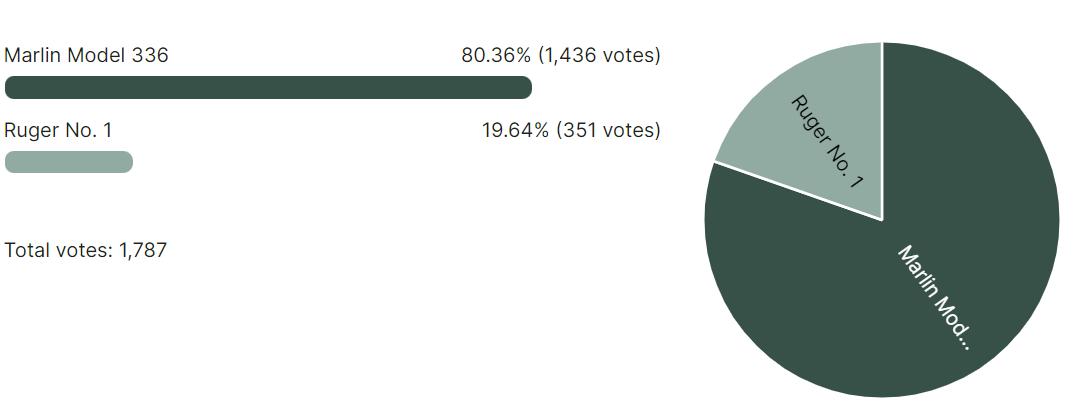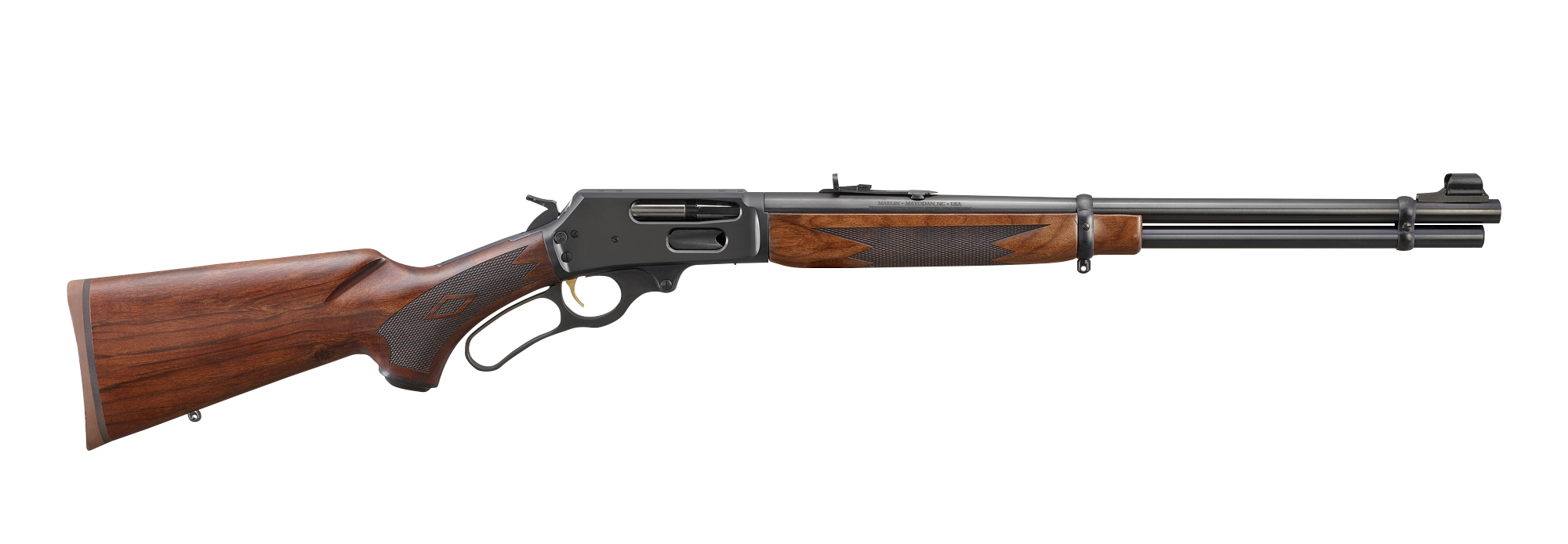
Voting for this matchup has concluded, and the Marlin 336 is the winner!

------------------
October Madness is back! This year, we're picking the greatest deer rifle of all time. And by "we," we mean "you." Scroll down to the poll at the bottom of this article to cast your vote, and the rifle with the most votes by 11:59pm on Tuesday, October 1st will advance to the next round. If you'd like a little more information before casting your vote, check out the cheat sheets on each rifle below. And feel free to explain your vote in the comments (or why the other side is dead wrong).

Don’t forget to vote in the other matchups, which you can do here.
Marlin 336
Originally offered in .30-30 Winchester and .32 Special, the Model 336 is also famous for being chambered in .35 Remington, which was added to the lineup in 1953. Its tubular magazine limits its offerings to round-nose cartridges, but the rifle has nonetheless been available in a huge variety of cartridges (many of which have become obsolete). Today, Ruger offers the 336 in .30-30 only.
History
Among the most famous lever-action rifles in American history, the Marlin Model 336 has been in continuous production since it hit gun store shelves in 1948. The company sold its 3,000,000th Model 336 all the way back in 1979, and the current figure is obviously much higher. The 336 is the brainchild of famous gun designer L.L. Hepburn and traces its lineage to the Models 1893, 1936, and 36.
What distinguished the 336 was a round breech bolt in place of the rectangular bolt of previous designs. Marlin claimed in marketing materials at the time that this “massive locking bolt” assured smooth feeding and was “virtually jam proof.” The design also promised greater strength and durability to handle what were at the time high-powered rifle rounds.
Remington Arms Company purchased Marlin in 2007, and Ruger bought the company from a bankrupt Remington in 2020. Ruger has since released their own take on the legendary design–the Model 336 Classic–which retains much of what Marlin fans loved (and some of what they didn’t) about the original rifle.
Features
The 336 has been offered in a huge variety of models and configurations. The original Model 336C sported a 20-inch barrel while the Model 336A featured a 24-inch barrel. The stock has a more vertical pistol-style grip rather than the Winchester 94’s straight grip stock. In 1956, Marlin began offering the 336 drilled and tapped for a scope (its side-ejection system made it an ideal candidate for this), and the famous gold trigger was added in 1959.
Original Marlin 336’s did not incorporate any kind of safety, but the infamous cross-bolt safety was added to Carbine models in 1984. This safety mechanism has been criticized by many as unnecessary and confusing, but Ruger decided to maintain it in its reintroduction.
But they also made some excellent improvements. Ruger-made 336’s feature a cold hammer forged barrel, a thinned forend, and various design and manufacturing tweaks to make the rifles more durable. For more info, check out our full review of the Ruger-made Model 336.
Availability
It’s not difficult to find a Marlin Model 336 on the used market, most of which can be had for less than $800. If you want a factory-new rifle, you may have to wait a bit longer. The demand for Ruger-made 336’s has been stout, and I’ve heard from readers lamenting the fact that they can’t be found for love or money. My best advice? Get on the waiting list now. Ruger is churning these things out every day, so it’s just a matter of time before you get your hands on one.
Ruger No. 1
Like the Model 70, Ruger’s No. 1 offered a host of cartridges throughout its lifetime. The company currently runs limited models each year, but here are a few of the most popular or intriguing offerings.
History
Introduced in 1967, the Ruger No. 1 is one of the best single-shot rifles ever made. With a tang-style safety and falling block action, this rifle developed a die-hard following, despite the popularity of bolt-action rifles during the time. Its introduction might have been a gamble, but it’s one that has certainly paid dividends.
Features
The action separates the two-piece stock, and Ruger offered the fore-end in three distinct styles: Mannlicher, beavertail, and the Alexander Henry. To run the action, you simply work the underlever, which lowers the breechblock and forms a sturdy and definitive locking position. The underlever and action design makes the rifle completely ambidextrous. While its single-shot capabilities might seem antiquated, the Ruger No. 1’s reliability (and popularity) has endured.
Availability
While Ruger still churns out No. 1s every year, the company typically does so in limited cartridge offerings and models. So while it might not be hard to find a Ruger No. 1, finding a specific model or cartridge offering might prove difficult. These limited runs and offerings add to the rifle’s value, but they don’t exactly bode well for consumers. New rifles run over a couple grand, while you can expect to pay over $1000 for a used No. 1 in good condition. That’s a lot of cash for a single-shot, but for die-hard fans or hunters in straight wall states, the Ruger No. 1 is the poster child for simplicity done right.







